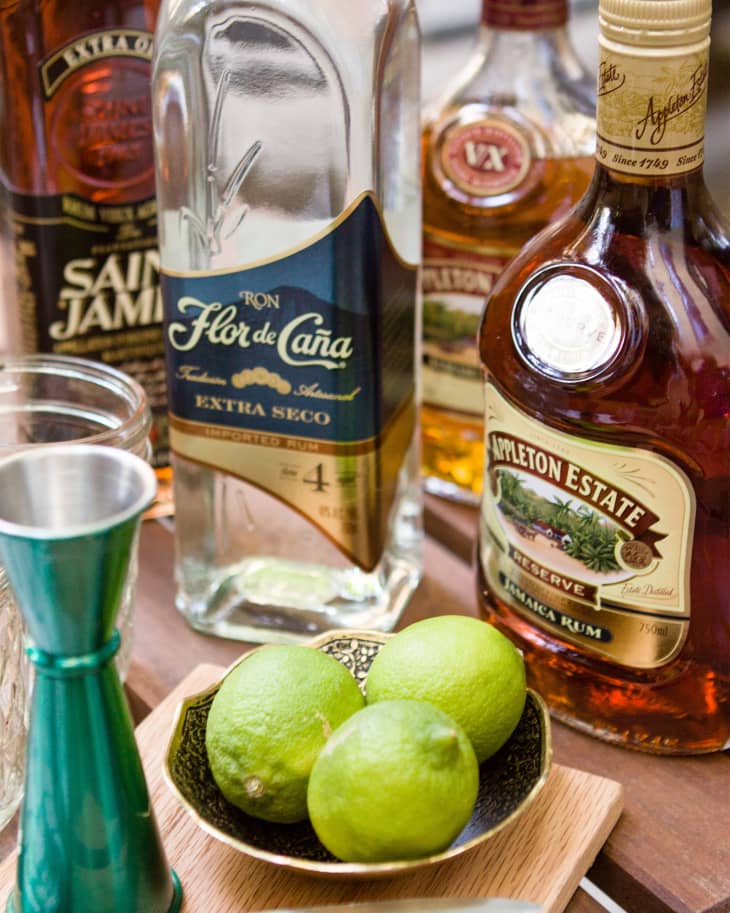A Brief History of Rum
With this installment of The 9-Bottle Bar, we aptly pivot from last month’s coverage of sweet vermouth to the tipple on our roster that likely sees its highest rates of consumption during summer. I’m talking of course about rum.
One of rum’s defining characteristics is that it derives from sugarcane, the sweet, fibrous, often toweringly tall grass that grows best in the steamy climates of the tropics. (Unsurprisingly, places known for cultivating sugarcane, such as island countries throughout the Caribbean and Brazil, have also developed into centers of rum production.) Numerous rums are made from molasses, a by-product of sugar refining, but there are also rum styles made from the juice and the syrup of the sugarcane. Each base ingredient yields a uniquely tasting product.
Sugarcane was introduced to the New World by European explorers starting with Christopher Columbus, and the invention of rum — or at least the fermented “wash” it’s distilled from — is thought to have occurred by accident at one or more of these newly established cultivating sites.
Basically, the molasses, which had been considered a useless waste product of the sugar refining process, was observed expelling bubbles when left to mingle with the warm, humid tropical air. Sugar manufacturers rightly identified this phenomenon as fermentation: wild, airborne yeasts were getting at the sugar content left in the molasses and releasing carbon dioxide. They knew that with those bubbles came alcohol, too, and it wasn’t long before fermented molasses became the basis for a distilled spirit, which we now know as rum.
Rum has a very colorful history, very much intertwined with America’s. It wasn’t always made as well as it is today, and for years it was saddled with a naughty reputation for being as awful-tasting as it was awfully intoxicating. The fact that rum once went by the name Kill-devil says a lot. In drinkers writer Wayne Curtis’s book And a Bottle of Rum: A History of the New World in Ten Cocktails, he notes that rum was “one of the first mass-market products manufactured in America.”
Curtis writes that early Americans saw their consumption of rum as a signifier of newly elevating social status: “They were no longer a people who made do with crude and rustic beverages concocted in their own kitchens. They could now pay for valued goods with the sweat of their labor.” Not only was drinking rum popular in colonial America, manufacturing it was, too. Curtis recounts in his book that rum hailing from Medford, Massachusetts, of all places, was for a time widely known for its quality.
Prohibition in the U.S. went far to kill off domestic rum production, but if anything it reinvigorated our domestic taste (i.e., demand) for the product, with the Caribbean, particularly Cuba, serving as a steady source of illicit rum during the country’s Noble Experiment of government-mandated temperance. Ernest Hemingway, for his part, helped to burnish rum’s allure with his enjoyment of Cuban-made Daiquiris and other rum-based cocktails.
And as distilling technologies have continued to improved, rum has shed its negative image as a harmful if beloved booze. Today a proliferation of styles exist, with different ingredients and fermentation and aging methods serving to distinguish them. Rums cover the gamut, from extremely light and dry to heady and sweet. There are funky, herbaceous rums, as well as extremely elegant, sip-worthy ones.
Next week we’ll delve further into these distinctive styles, with particular attention paid to light rum, a very versatile spirit for cocktails.
